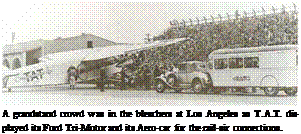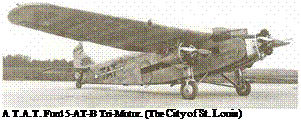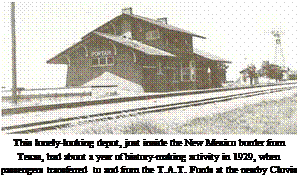Transcontinental Air-Rail




 |
 |
Coast-to-Coasf Luxury
On 16 May 1928, the Pennsylvania and Santa Fe Railroads, possibly with the idea of “if you can’t beat ‘em, join ‘em created Transcontinental Air Transport (T. A.T.), in cooperation with the North American aviation group, directed by a visionary, Clement Keys, the man who coined the phrase (as true today as it was in 1929): “90% of aviation is on the ground.” One practical demonstration of this axiom then was the novel idea of combining rail and air transport modes, mainly to avoid the hazards of flying across mountain ranges with inadequate flying equipment or navigational aids. The result was T. A.T., substantially backed by the Pennsylvania Railroad. The investment totalled $3,000,000.
The Lindbergh Line
In company with Pan American Airways, T. A.T. engaged the aviation hero, Charles Lindbergh, as its technical adviser. It was a master-stroke. Simultaneously, it acquired the unparalleled experience of the world’s finest airman; and at the same time gained priceless publicity and promotional exposure without the cost of advertising. Where Lindbergh went, the public was sure to follow.
After the button-pressing ceremony in Los Angeles, Charles piloted one of the six aircraft used for the inaugural service, on 7 July 1929. He flew the eastbound Ford TriMotor, the City of Los Angeles, from Glendale to Clovis, New Mexico, where the passengers transferred, by aero-car, to the Santa Fe at nearby Portair depot.










